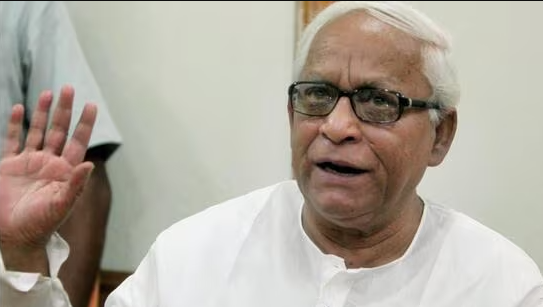Buddhadeb Bhattacharjee: The Reformist Politician Who Tried to Transform the Left
 Angelina
Angelina
Buddhadeb Bhattacharjee, the last Left Chief Minister of West Bengal, passed away in Kolkata at the age of 80, closing a chapter on his tumultuous and influential political career. Known for his ambitious reforms and the struggle to modernize the state, Bhattacharjee’s legacy is one of both significant achievements and stark failures.
A Promising Start
Bhattacharjee's rise to prominence came in 2000 when he succeeded the legendary Jyoti Basu as Chief Minister of West Bengal. His tenure was marked by an aggressive push towards industrialization, with grand plans that included the Nano car project in Singur and several other development initiatives.
Despite winning overwhelming support in the 2001 and 2006 Assembly elections, Bhattacharjee faced growing challenges. His efforts to attract industry, including major investments in IT and steel, were met with resistance, especially from farmers affected by land acquisitions.
The Turning Point
The land acquisition controversy over the Nano plant in Singur and the SEZ in Nandigram sparked massive protests. The situation escalated, leading to the tragic deaths of 14 protesters in Nandigram in March 2007. This unrest was a significant blow to Bhattacharjee’s government and marked the beginning of the end for the Left Front’s dominance in Bengal.
The failure of these projects and the ensuing political fallout paved the way for Mamata Banerjee’s Trinamool Congress (TMC) to rise in power. In the 2011 Assembly elections, the TMC ended the Left’s 34-year rule, and Bhattacharjee lost his seat in Jadavpur to TMC’s Manish Gupta.
Reflections and Regrets
In a 2013 interview, Bhattacharjee defended his push for industrialization, arguing that it was essential for the future of Bengal’s youth. He expressed regret over the violence during the Nandigram protests, acknowledging the difficult choices faced by the government at the time.
Political and Cultural Contributions
Bhattacharjee’s political journey began in 1966 as a primary member of the CPI(M), where he quickly rose through the ranks. He served as Information and Public Relations Minister, Home Minister, and Deputy Chief Minister before becoming Chief Minister. Despite his political achievements, he remained connected to his cultural roots, engaging with Bengali literary figures and contributing to literature himself.
After his political career waned, Bhattacharjee retreated from the limelight due to health issues. He stepped down from his roles in the CPI(M) Politburo and Central Committee in 2015, and by 2018, he had largely withdrawn from active politics.
Legacy and Final Years
In his later years, Bhattacharjee’s public appearances were rare, and he declined the Padma Bhushan award in 2022, citing a lack of information about it. The CPI(M) even used an AI-generated avatar of Bhattacharjee in a last-ditch effort to rally support during the Lok Sabha elections.
Bhattacharjee’s life and career reflect a complex legacy—one marked by bold reforms and equally notable setbacks. While his efforts to modernize West Bengal were met with significant opposition, his impact on the state’s political landscape and his contributions to its cultural life remain significant.
Conclusion
Buddhadeb Bhattacharjee’s passing marks the end of an era for West Bengal's Left politics. His journey from a reformist leader with ambitious goals to a figure overshadowed by controversy and defeat highlights the challenges of political transformation and the delicate balance between development and social justice.
Subscribe to my newsletter
Read articles from Angelina directly inside your inbox. Subscribe to the newsletter, and don't miss out.
Written by
